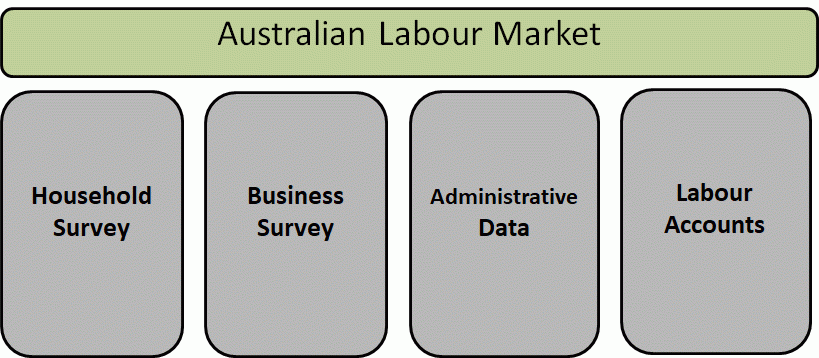Introduction
The two-yearly Retirement and Retirement Intentions (R&RI) survey was first conducted in 2004-05, as part of the Multi-Purpose Household Survey. Similar data on retirement and retirement intentions were previously collected on an irregular basis between 1980 and 1997 in surveys conducted as supplementary to the Labour Force Survey (LFS), and also in the 2007 Survey of Employment Arrangements, Retirement and Superannuation (SEARS).
Data are used to examine changes in retirement trends over time, factors which influence retirement, and the income arrangements made by retirees and potential retirees for their retirement.
Descriptions of the underlying concepts and structure of labour statistics, and the sources and methods used in compiling these estimates, are presented in Labour Statistics: Concepts, Sources and Methods (cat. no. 6102.0.55.001).
Reference period
The reference period for the Retirement and Retirement Intentions survey is the 2018-19 financial year.
Scope and coverage
The scope of this survey is people aged 45 years and over, excluding:
- members of the permanent defence forces
- certain diplomatic personnel of overseas governments, customarily excluded from census and estimated population counts
- members of non-Australian defence forces (and their dependants)
- overseas residents in Australia
The following exclusions also apply:
- people living in remote parts of Australia (including Aboriginal and Torres Strait Islander communities)
- people living in non-private households such as hotels, university residences, students at boarding schools, patients in hospitals, inmates of prisons and residents of other institutions (e.g. retirement homes, homes for people with disabilities)
Coverage rules are applied which aim to ensure that each person is associated with only one household and hence has only one chance of selection in the survey. See the Explanatory Notes of Labour Force, Australia (cat. no. 6202.0) for more details.
Collection method
The Retirement and Retirement Intentions topic is collected within the Multi-Purpose Household Survey (MPHS), a supplement to the monthly Labour Force Survey (LFS).
Data are collected via personal interviews by either telephone or in person at selected households.
For more details, see the MPHS chapter in Labour Statistics: Concepts, Sources and Methods (cat. no. 6102.0.55.001).
Sample design
Each month, a sample of households are selected for the MPHS from the responding households who are in the last of their 8 months in the LFS. In these households, after the LFS had been fully completed for each person, a usual resident is selected at random to complete the R&RI questionnaire.
For details on the sample design of the LFS, see the Explanatory notes in Labour Force, Australia (cat. no. 6202.0).
Sample size
The sample size for the 2018-19 R&RI survey (after taking into account scope, coverage and sub-sampling exclusions) is approximately 8,000 people.
Weighting, benchmarking and estimation
Survey weights are calibrated against population benchmarks to ensure that the survey estimates conform to the independently estimated distribution of the population, rather than the distribution within the sample itself.
When calibrating the weights, the survey sample is grouped into categories based on the following characteristics:
- State or territory
- Capital city or rest of state
- Sex
- Age
- Employed full-time, part-time, unemployed or not in the labour force.
The R&RI survey benchmarks were based on a 12 month average of the population estimates for the financial year July 2018 to June 2019, as reported in the December 2019 issue of Labour Force, Australia (cat. no. 6202.0). This approach is used to remove the seasonality from the employed, unemployed and not in the labour force benchmarks and to improve coherence between the two publications.
Estimates from previous surveys back to 2004-05 have also been revised using this method, with benchmarks based on the same population series (as at December 2019). The revised timeseries is available in Table 2 of this publication (in the Data downloads section). The format of Table 2 has been modified to accommodate extending the series back to the November 1997 survey (which has also been rebenchmarked).
Survey output
Data on the retirement status and retirement intentions of persons aged 45 years and over, and includes:
- Socio-demographic information
- For people who have retired – information about age at retirement, sources of income, and superannuation
- For people who intend to retire – information about details of current job, retirement intentions, expected sources of income at retirement, superannuation, and transition to retirement plans
See the Retirement and Retirement Intentions data item list for more details (in the Data downloads section).
Data are also available in TableBuilder, see Microdata: Barriers and Incentives to Labour Force Participation, Retirement and Retirement Intentions (6238.0.55.001).
Comparability with monthly LFS estimates
Due to differences in the scope and sample size of the MPHS and that of LFS, the estimation procedure may lead to some variations between labour force estimates from this survey and those from LFS.
Reliability of estimates
Estimates are subject to sampling and non-sampling errors:
- Sampling errors are the difference between the published estimate and the value that would have been produced if all households had been included in the survey. For more information see the technical note on Data Quality.
- Non-sampling errors are inaccuracies that occur because of, for example, imperfections in reporting by respondents and interviewers and errors made in coding and processing data. These inaccuracies may occur in any enumeration, whether it be a full count or a sample. Every effort is made to minimise non-sampling error by careful design of questionnaires, intensive training and supervision of interviewers and effective processing procedures
Related publications
ABS publications which may also be of interest include:
- Labour Force, Australia (cat. no. 6202.0)
- Labour Statistics: Concepts, Sources and Methods (cat. no. 6102.0.55.001)
- Participation, Job Search and Mobility, Australia (cat. no. 6226.0)
- Barriers and Incentives to Labour Force Participation, Australia (cat. no. 6239.0)
- Microdata: Longitudinal Labour Force, Australia (cat. no. 6602.0)

